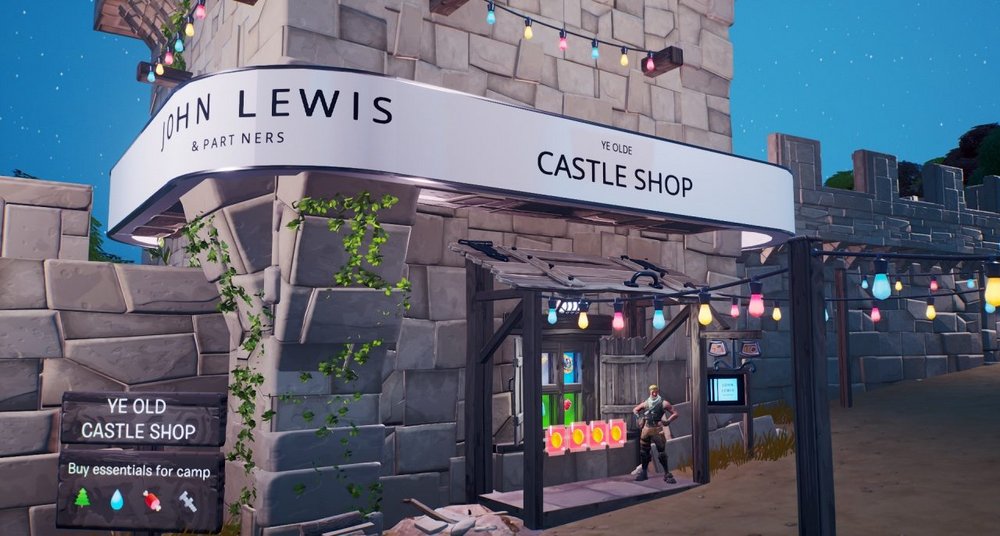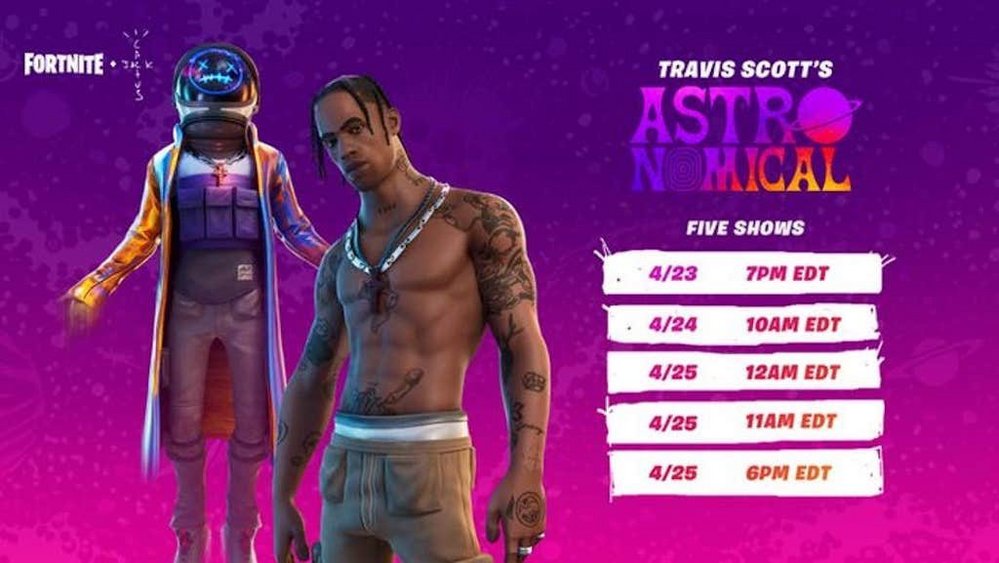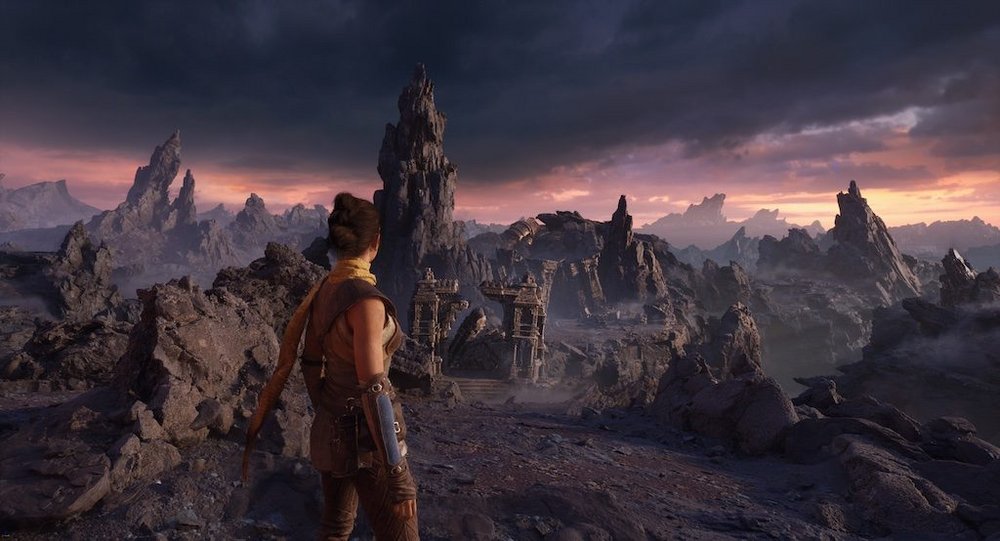Gaming and the metaverse /
Epic Games business development manager Rachel Stones reveals what brands need to do to prepare for the metaverse
Chloe Markowicz
/
As a business development manager based at Epic Games’ Innovation Lab in London, it’s Rachel Stones’ job to support players in the media and entertainment space as they look to engage with the metaverse.
Day to day, she and her team consult with brands and their agencies about integrating real-time technology into their strategic and production pipelines. Video game and software developer Epic Games might best be known as the maker of hit game Fortnite (which runs on its Unreal Engine game engine), but the company’s business also involves creating a series of tools and software to build for the metaverse. As Stones says: ‘At Epic we’re curating a creator ecosystem, a series of products and services with the goal of democratising the creation of real-time 3D for the masses.’
Here, Stones talks to Contagious editor Chloe Markowicz about the use cases of Epic Games’ revolutionary software, how brands should act if they want to connect successfully with gamers and the experimentative attitude marketers should adopt to prepare for the metaverse.
What are the use cases for tools like Unreal Engine, especially in relation to brands and marketers?
Unreal Engine allows you to render 3D in real time. If you think about that, in relation to advertising, brands use 3D to do so much, from the design of products all the way through to how they then market their products and everything in between. But that kind of 3D is subject to long render times and it also just creates static objects. Real-time 3D, which harks from the gaming industry, runs on game engines and has to render in real time because it needs to react to the wishes of the player. If I’m turning in that direction and shooting a gun, I expect the dinosaur that I’ve shot to react to me, I can’t wait for render time, it has to happen in real time.
What you can do with this technology now is almost limitless. You might see Unreal Engine augmenting a broadcast feed at Coachella, or on an entertainment show like Strictly Come Dancing, where they’ve got an augmented layer of 3D assets that are integrating with the dancers. A lot of the Winter Olympic broadcasting was delivered using Unreal Engine. The presenters sat on a green stage and everything behind them that was moving and interacting was all created in the game engine. The film and TV industry are using it a huge amount in the way that they create content, for example, music acts like Katy Perry and Childish Gambino are using it for their tours. Whether or not you know it, you’re probably seen uses of Unreal Engine every day.

Is a lot of it about making content more exciting and reactive?
It’s in effect bringing 3D to life and allowing you to interact with it. A lot of brands have characters. Take Tony the Tiger, for example. It’s possible now to have Tony the Tiger sit on the sofa with Stephen Colbert and have an interview with him so he can react in real time to Stephen because he’s rendering in real time. So, you can bring characters, assets, worlds, environments to life and have them act like they would in the real world.
You mentioned that Unreal Engine will help you build for the metaverse. How does Epic Games view the metaverse and how does it draw the line between gaming and the metaverse?
There’s been a lot of talk about the gaming audience. At a brand and agency level it is a term that’s kind of reductive now. Statistically, over 52% of people are kind of categorised loosely as gamers now anyway. All of us have experienced or engaged in that method of communicating to some degree, maybe we have a virtual avatar, maybe we’ve even purchased some sort of digital garment. Gaming is the lineage of the metaverse. There are some key behaviours that exist in the gaming community that need to be carefully considered, but gaming is the foundation of the metaverse as opposed to the metaverse.

What about when it comes to Epic Games’ most popular properties, for example Fortnite? To what extent does Epic view Fortnite as a game versus a virtual world or proto-metaverse?
As a business, we know that Battle Royale, the famous first-person shooter game that people know Fortnite for, has its own narrative, its own community; people expect certain things in that space. We don’t necessarily want to interrupt that narrative.
Fortnite’s creative experiences, which offer many other entry points into the Fortnite universe, allow us to experiment more with the more social side of the Fortnite universe. Battle Royale is still fundamentally a game, though you might use it as a way of seeing your friends, socialising and consuming entertainment. Fortnite is becoming more of an experiential space and potentially could be considered a ‘proto-metaverse’.
Right now, the creative tools in Fortnite can be limiting. As a brand, you have to be comfortable with subscribing to Fortnite’s aesthetic, anything you build there will look like Fortnite. The long-term vision is that instead of having a very small toolkit of almost ‘Fortnite Lego’, you’ll get the ability to use a broader set of tools to create in that space. It's going to evolve considerably in the next year and become more exciting for brands wishing to leverage the audience we have there. More than 50% of our players engage with Fortnite creative experiences, and with 400 million players you have an opportunity to really make waves with those audience numbers. It’s also a great place to test and learn.

When it comes to the brands that have really got it right on Fortnite, what is it that they have done so well?
They’ve tried to amplify what is already there. As a starting point, understanding what that community enjoys. Listening first, understanding and then being able to engage in such a way that it feels natural and authentic. They should be amplifying not distracting. There’s a kind of generic marketing that happens in the real world that I don’t think would be looked kindly upon by our audience. The brands that have done it well have created a true value exchange: if you’re going to spend time with me, I’m going to give you a really good reason for doing so.
Rachel Stones, Epic Games
What do you think brands need to better understand about gaming audiences?
To put it bluntly, gaming audiences don’t necessarily care about brands; they care about fun experiences and entertainment. It’s a discerning audience that is not going to take kindly to a brand inserting itself somewhere where it isn’t appropriate for them to be. It’s important to understand what the community really enjoys, the kinds of events or game mechanics they’re into and instead look to enhance those.

Are you able to pick out any brands that you think have done particularly well on Fortnite?
I really liked what [department store] John Lewis did with [UK broadcaster] ITV over Christmas with it. Last year they teamed up with ITV’s I’m a Celebrity, which is a challenge-based show and is actually the UK’s highest viewed entertainment property. They made a Fortnite island and linked that to what was going on in the show. As a challenge-based TV show it translates nicely into the Fortnite world. A lot of the challenges that you would expect in the show were then made available to players. There was also a John Lewis store, which provided people with things to ‘Christmasify’ their Fortnite environment. John Lewis has a legacy of creating a big moment at Christmas. Everyone looks out for their holiday ad. It was adding a layer of holiday fun to a Fortnite map, something that players really engaged with. This was a really clever way bringing John Lewis into the Fortnite world quite unexpectedly, in a way that felt authentic and fun.
Rachel Stones, Epic Games
John Lewis is not necessarily the brand that you would expect to see on Fortnite. Are there any limits as to what brands can or should be on Fortnite?
It’s certainly more challenging for some brands. If you’re a [consumer packaged good] product, like a deodorant, it’s more difficult. You’ve got to go through a layer of translation in order to emerge in that space, but I see that as a creative opportunity. You have to begin to think about what your brand means on a deeper level than just its practical utility.
As a brand, you have to think about the long-term role you want to play in people’s lives. So, I don’t think Fortnite is off limits for anyone, they just have to be really clever with how they interpret their offering and make sure they do that in way that feels fun, maybe poking fun at what they do in the real world, translating themselves in a way that’s unexpected. It’s quite mad that often we see brands literally taking their physical product and recreating it in the metaverse. In the digital world you’ve got limitless opportunities. That’s why I loved [the] Travis Scott [concert] so much. Having him be 100 feet tall was the thing that made it really cut through for me personally, because why shouldn't he be 100 feet tall? Why would you be a normal size? Or on a stage? In the proto-metaverse, these are formative times, we’re still just seeing a lot of the physical being replicated.

What do you hope brands will do more of in the future?
Right now, the metaverse doesn't truly exist. It’s not interoperable. I can’t enter through any device. I can’t go from Fortnite to Roblox to Decentraland and take my avatar and my assets with me. But let’s imagine I could. Say you wanted to buy a [virtual] vehicle to take you around, immediately you would think: I’m going to buy a vehicle from people who are known for making vehicles. But why would those vehicles just drive on ground? Why wouldn’t they fly or have abilities outside of what they can do in the real world? I’d still be more likely to buy a Tesla in the metaverse then I would a made-up brand that I’ve never heard of, because it connects to me in terms of value. If they’re creative then that layer of fantasy could be super fun to see unfold.
Are you saying that brands are too limited by real world constraints and are not allowing themselves to think creatively enough?
Exactly. Brands need to begin to think of the limitless opportunity in a digital space, but also think about what they mean to the world and to their audience.
What kind of misconceptions do you think brands have when it comes to virtual environments? What are they getting wrong?
Honestly, I feel like no one emerging in this space should be regarded as doing something wrong. I think they’re just testing and everyone can be forgiven should their first efforts not land. Brands might make some mistakes but actually, they are going to learn at a quicker pace than their competitors [that do nothing]. So it’s good to avoid being concerned about failure.

How can brands strike the right balance between experimentation and planning strategically for their role within the metaverse?
I feel like there should be a long-term strategy of five to seven years. They should think: ‘If we’re to believe in this future vision of the metaverse, where might we sit within that?’ Working back from that, they might think: ‘If long term I want to have my own environment, my own space and have the ability to invite my audiences there, to broadcast from there, run events, do everything I do in the real world and much more, then what are the sorts of things that I might look to do today to further me on that journey?’ Having a long-term strategy is smart. In the short term, there are a number of small things that you can do to begin to emerge in this space.
Earlier, I spoke not only about our consumer experiences, but about our tools, our software. Real-time 3D is the foundation for the metaverse, that cannot be argued. So for anything like the metaverse to exist, it would have to run on a game engine. We have one (but of course others are of course available). Decentraland has its own, Roblox runs on its own proprietary game engine. Game engine technology is the building bricks for all of this. So, as a brand, as an agency, beginning to engage with real-time 3D is really important. You can literally start your journey on that today.
In addition, there are lots of little gateways to the metaverse that exist now, like in-camera VFX, or virtual production. That requires you to build an environment in a game engine that you can then shoot your content within. It’s kind of the evolution of the green screen. It allows you to do a lot of the stuff that you do already, but in a slightly different way that begins your journey towards the metaverse.
Also, things like in-game partnerships, so experimenting on some of the proto-metaverses, like Fortnite, et al, is a valuable thing to try. Have a play. There are virtual characters, avatars, MetaHumans, that can embody your brand. Perhaps you have ambassadors, perhaps you have a character, perhaps you just want to make your customer service more interesting by having an avatar or character drive it? What all of these things have in common is a game engine at their centre, so they are valuable stepping stones towards the metaverse.

What other advice would you give to brands starting to think about the metaverse?
I don’t think what we’re talking about here is that much bigger of a shift than when social media arrived. The traditional mechanics of marketing all still exist, it’s just a slightly different way of interacting. Knowing your brand and knowing your audience is important, especially because there’s a collaborative element to the metaverse. As a brand, you may have to get comfortable with people interacting with your product and your brand in a way that you can’t control. You might build an experience and people might evolve it. You just have to be comfortable with that reality in this space. You need to know the role that you want to play in people’s lives and what you want to mean to your audiences above the practical uses of your product.
Brands need to be comfortable with the fact that this is a persistent environment that should naturally evolve with their audiences. So they’ll be building together in a way that we haven’t experienced before. With social media, you had the ability for your audience to talk back to you, even troll you. That was a new reality and now brands can be even more intimately connected with their audiences. You can get real-time feedback on how people are experiencing or interacting with whatever you create.
Want more of the same? /
We don’t just write about best-in-class campaigns, interviews and trends. Our Members also receive access to briefings, online training, webinars, live events and much more.







